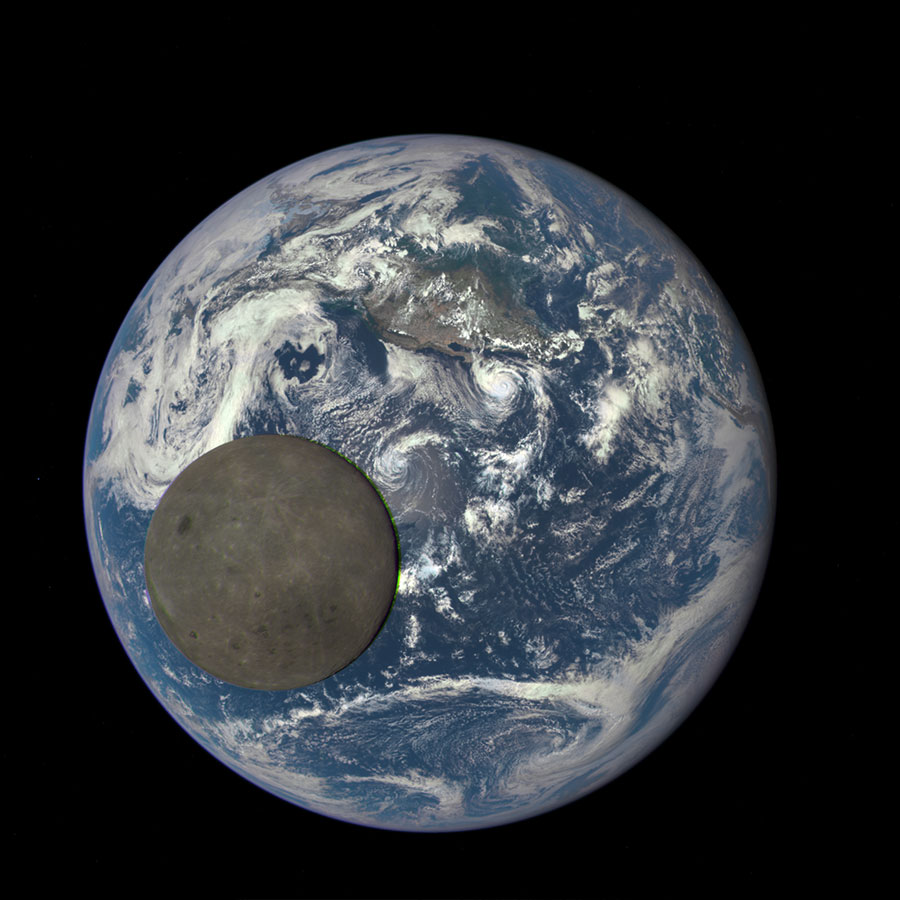NASA recently revealed the latest images from the far side of the moon. They used the Earth Polychromatic Imaging Camera (EPIC) which is designed to observe our planet with the objective of monitoring climate and predict space weather. The view is impossible to see from Earth as the Moon faces always the same direction because it is tidally locked to the plantet.
The Deep Space Climate Observatory (DSCOVR) satellite, which is a partnership between NASA, the National Oceanic and Atmospheric Administration (NOAA) and the US Air Force, is equipped with the EPIC, the powerful 4-megapixel CCD camera and telescope. The camera moves synchronized with the Earth and the Sun, at a distance of a million miles away from us. The DSCVOR’s main task is to allow NOAA monitor the solar wind in real-time so that the NASA can offer warnings of above average amounts of high-energy particles produced by the Sun.

In the images the Earth can be seen spining as always , when surprisingly the Moon appears in front of its larger neighbor. Scientist said the images were taken between 12:50 pm and 5:45 pm PDT on July 16.
The far side of the moon was first discovered in 1959, when a Soviet spacecraft called Luna 3 pictured it.
“It is surprising how much brighter Earth is than the Moon”, said DSCOVR project scientist Adam Szabo. “Our planet is a truly brilliant object in dark space compared to the lunar surface”.
The new images also proved that the far side of the Moon doesn’t appear to have lunar maria, those large, dark, basaltic plains formed by ancient volcanic eruptions that the other side do have.
Although our satellite is surrounded by darkness, the Blue Planet is shown in a sunlit position very similar with other images given to us by the International Space Station.
The EPIC in still in testing. However, next moth it will begin its daily monitoring to Earth’s aerosol levels, ozone, cloud coverture, vegetation, etc. The images will show different locations of the planet and will be available after 12 to 36 hours from acquired.
Source: Earth Observatory NASA
